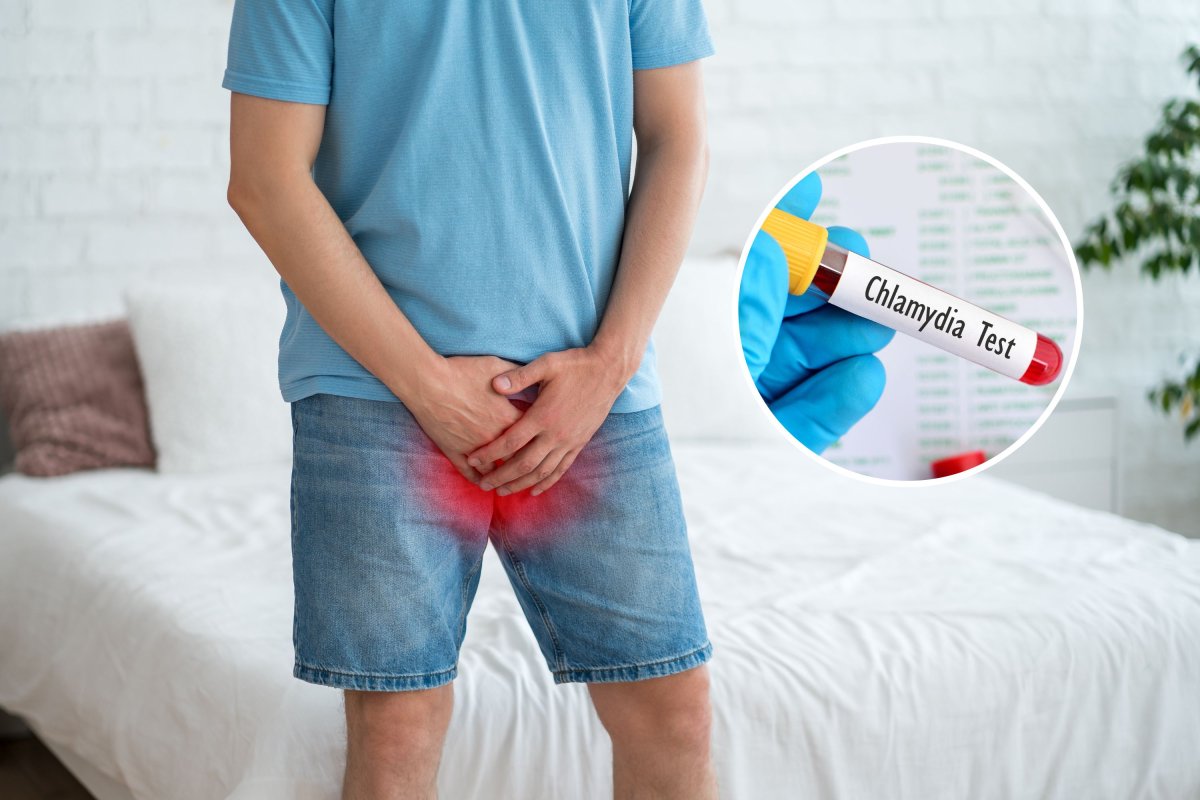Chlamydia and gonorrhea are on the rise in New York City, a new report reveals.
According to the 2023 Sexually Transmitted Infections (STI) Surveillance Report recently released by the New York City Health Department, rates of STIs increased since the year before.
While rates of gonorrhea and chlamydia rose across the city, early stages of syphilis fell drastically.

The report shows that there was an 8 percent increase in chlamydia rates among men, and a 5.4 percent increase among women between 2022 and 2023. Of infected women, young adults and teenagers tend to have higher rates than older women, with 56 percent of all cases being recorded in women aged 15 to 24.
What is chlamydia?
Chlamydia is a common sexually transmitted infection caused by the bacterium Chlamydia trachomatis that affects the genital area but can also infect the rectum, throat, or eyes. It is one of the most reported bacterial STIs worldwide, with around 128 million cases reported worldwide every year.
In many cases, chlamydia is asymptomatic, but symptoms can include painful urination, abnormal vaginal discharge, bleeding between periods, or pain during intercourse for women, and discharge from the penis, and painful urination in men. If left untreated, chlamydia can lead to serious health issues, such as pelvic inflammatory disease (PID), which may lead to infertility.
The data also revealed that rates of gonorrhea increased by 15.9 percent in men and 1.1 percent in women.
What is gonorrhea?
Gonorrhea is caused by the bacterium Neisseria gonorrhoeae and commonly affects the mucous membranes of the reproductive tract, but can also infect the rectum, throat, and eyes. This infection is also very common, with 82 million new cases being recorded around the world each year.
Symptoms also include painful urination and discharge and may also eventually lead to infertility if left untreated.
What is syphilis?
Syphilis is caused by the bacterium Treponema pallidum and progresses through four distinct stages which can lead to severe health complications if untreated.
Primary syphilis may involve the appearance of sores, which develop a few weeks after exposure, and eventually heal after a few more weeks. One to six months later, secondary syphilis develops, with a rough, bumpy syphilis rash appearing alongside other symptoms like fever.
After this stage, the infection enters the latent stage, which can last for years. Without treatment, the fourth and final stage may occur—tertiary syphilis—which causes severe damage to the heart, brain, nerves, blood vessels, bones, and other organs.
The report also shows that there was a 22.6 percent overall decline in primary and secondary syphilis, with a 21.7 percent drop in men and 29.7 percent fall in women.
There was also a 19.8 percent drop in rates of early latent syphilis, with a 22.1 percent decline in men but only a 5.8 percent drop in women. However, there was an increase in rates of the latest stages of syphilis by 8.1 percent overall, with a much larger climb in rates among women than men, at 22.5 percent compared to 4.3 percent.
How are they transmitted?
All three of these infections are spread via vaginal, anal, or oral sex with an infected person, though syphilis can also be spread by non-sexual direct contact with a syphilis sore or by childbirth, leading to congenital syphilis.
How are they treated?
These infections can all rapidly be cleared by treatment with antibiotics.
Rates of chlamydia and gonorrhea, as well as the early stages of syphilis, were most common in the Clinton-Chelsea neighborhood of Manhattan, with Central Harlem-Morningside Heights in Manhattan and Williamsburg-Bushwick in Brooklyn being a hotspot for gonorrhea in particular. There was a much higher prevalence of STIs in lower-income neighborhoods.
"Undiagnosed and untreated STIs can cause serious health problems for New Yorkers. The Health Department strongly encourages regular testing and the use of preventive measures," Acting Health Commissioner Michelle Morse said in a statement.
"The 2023 STI Surveillance Report data remind us that the city must continue to invest in increased and equitable access to testing, treatment, and prevention services, and address the inequities that prevent too many New Yorkers from accessing vital resources."
The report also found that there were significant racial inequalities in the rates of these STIs, with primary and secondary syphilis rates being 2.5 times higher amongst Black men than white men, and 9.9 times higher in Black women than white women.
"The STI Surveillance Report underscores the critical importance of barrier-free STI testing, treatment, and prevention for youth," Angela Diaz, Director of the Mount Sinai Adolescent Health Center, said in the statement.
"Adolescent girls and young women consistently have the highest rates of chlamydia of any age group, but not all youth are affected equally. Black and Latina youth continue to be disproportionately impacted. Young New Yorkers need and deserve access to services that are confidential, judgment-free, culturally responsive, and provided at no cost."
These STIs and others—including HIV, HPV and genital herpes—can be prevented by using condoms consistently and correctly during all sexual activity, and undertaking regular STI screenings, especially for individuals with multiple or new sexual partners.
"Getting tested for STIs on a regular basis is an important action that all New Yorkers can take to optimize their health," Wendy Wilcox, Chief Women's Health Officer of New York City Health + Hospitals, said in the statement.
"Not only does it allow for early detection and treatment but can prevent adverse health outcomes such as infertility and in some cases, even cancer. Taking care of your sexual health is a critical step to taking care of your overall health. Speak to your health care provider and make this a resolution that you will keep all year long!"
Do you have a tip on a science story that Newsweek should be covering? Do you have a question about sexually transmitted infections? Let us know via science@newsweek.com.




















 English (US) ·
English (US) ·